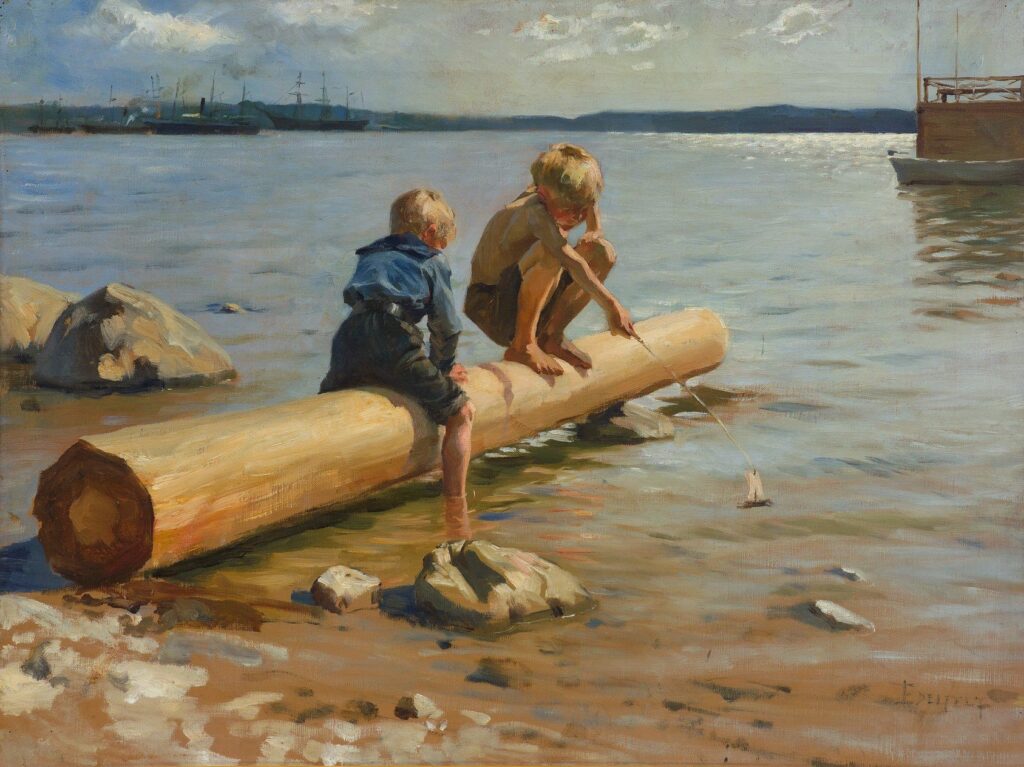The changing of seasons reflects the continuity of life. Nature is always in a state of change, preparing for the next season. In the same way, human minds are typically oriented towards the future. The seasons, or rather the amount of light, affect brain functions, emotions and social life. It is therefore no wonder that we divide the seasons into the more anticipated and the less pleasant according to our personal experiences. Here in the North many people love summer, but all seasons have their champions – and happy is the person who finds joy in each of them. Especially for those who enjoy spending time in the nature, the annual cycle of seasons offers an inexhaustible supply of things to experience and marvel.
The joint exhibition by Oulu Museum of Art and the Finnish Fine Art Foundations explores how seasons are reflected in nature, landscapes and people’s lifestyles. In a northern-hemisphere country like Finland, people are used to four seasons – or, in the Sámi community, even eight. In the recent years, however, we have had to adjust to the idea that the seasons are not what they used to be. Climate change affects global climate trends, which in turn have a tangible and significant impact on the living conditions of plants, animals and people.
The Seasons in Us consists of 80 works, mostly paintings. The works have been selected from the nationally significant art holdings of the eleven member organisations of Finnish Fine Art Foundations that together hold more than 25,000 artworks. According to Elina Vieru, the curator of the exhibition, the works featured in The Seasons in Us emphasise representational qualities and a certain concreteness as many of the collections focus on older figurative art and, on the other hand, the theme of the exhibition limits the choice.
Approximately half of the works are dated before the 1950s while the other half is more recent. Art from the 1870s to the early decades of the 20th century is represented in by works of artists such as Ferdinand von Wright, Albert Edelfelt, Helene Schjerfbeck, Pekka Halonen, Akseli Gallen-Kallela, Ellen Favorin and Helmi Biese that often depict the Finnish nature in a way that is nostalgic for the contemporary viewer. In the works of contemporary artists such as Marika Mäkelä, Petri Hytönen, Joel Slotte and Anna Retulainen, the seasons are often approached from the perspective of subjective states of mind and interpretation.

